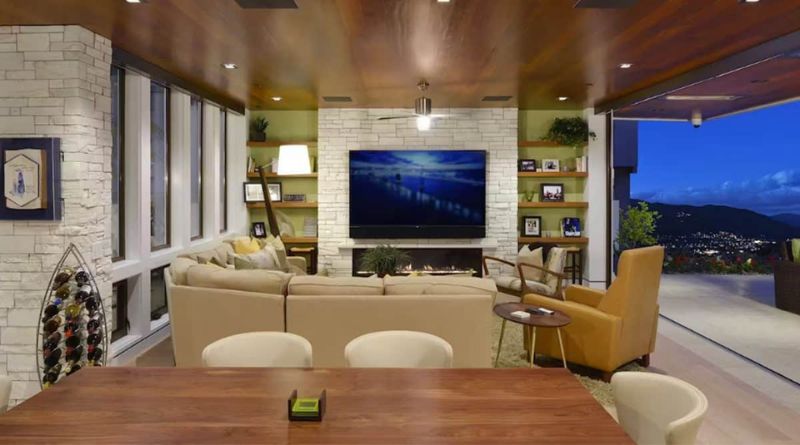In the world of architecture and interior design, seamless walling design has become an increasingly popular choice for creating sleek, modern, and visually appealing spaces. Whether it’s for residential, commercial, or industrial settings, seamless walling offers a unique aesthetic that emphasizes continuous surfaces without the interruption of visible joints or seams. This design approach offers both functional and aesthetic benefits that make it an ideal solution for a variety of spaces.
Table of Contents
In this article, we’ll explore what seamless walling design is, the materials used in its creation, its benefits, and the various applications where it can be employed. We will also address some frequently asked questions to provide a deeper understanding of this innovative design concept.
What is Seamless Walling Design?
Seamless walling design refers to the creation of smooth, uninterrupted wall surfaces, typically without any visible joints, seams, or gaps. This type of walling is achieved using materials that are either applied directly onto the wall or used as panels that are seamlessly joined to create a continuous look.
Traditional wall finishes often involve the use of materials like drywall, plaster, or tiles, which can leave visible seams where the edges meet. In contrast, seamless walling uses materials and techniques that provide a smooth, fluid surface that creates the illusion of a single, unified wall.
The concept of seamless walling is widely used in modern architecture and interior design because of its ability to create clean lines and minimalistic environments. It can be applied to both interior and exterior walls, providing flexibility in design and usage.
Key Materials for Seamless Walling Design
The materials used in seamless walling design vary depending on the desired aesthetic, the environment in which they will be used, and the overall design goals. Some of the most popular materials include:
1. Plaster
Plaster is one of the most traditional materials used in seamless walling design. When applied correctly, plaster can create a smooth, uniform finish that covers up any seams or joints. Plaster walls can be finished in a variety of textures, from ultra-smooth to textured, depending on the desired look. The flexibility of plaster makes it a versatile option for both interior and exterior applications.
2. Polished Concrete
Polished concrete has gained popularity in modern design for its sleek, industrial aesthetic. When polished, concrete walls can achieve a smooth, high-gloss finish that feels contemporary and sophisticated. This material is durable, easy to clean, and perfect for both residential and commercial spaces.
3. Gypsum Board with Joint Compound
Gypsum board is a common material for interior walls, but when combined with joint compound and finished correctly, it can offer a seamless surface. The compound fills in any gaps or joints, leaving a smooth and uniform wall surface once sanded and painted. This type of seamless walling is often used in homes and offices.
4. Wall Panels
For those seeking the look of seamless walls without the complexity of plastering or applying compound, seamless wall panels made from materials such as fiberglass, PVC, or composite materials are often used. These panels are designed to fit tightly together with minimal gaps and can cover large surfaces with ease.
5. Tiles with Minimal Grout
While tiles are typically associated with visible grout lines, there are some tile designs that feature minimal or nearly invisible grout lines, creating a near-seamless look. This method is often used in high-end kitchens, bathrooms, and other wet areas where moisture resistance is important.
6. Resin and Acrylic Coatings
Resin and acrylic coatings are sometimes applied over other materials to create a seamless finish. These coatings can be poured or spread across surfaces to form a smooth, continuous layer that gives the appearance of a seamless wall. They are often used in commercial applications where durability and cleanliness are priorities.
Benefits of Seamless Walling Design
The adoption of seamless walling design offers several benefits that contribute to its growing popularity in both residential and commercial spaces:
1. Aesthetically Pleasing
The most obvious benefit of seamless walling design is its sleek, modern look. It creates a clean and continuous surface that enhances the overall visual appeal of a room or building. Without visible seams or interruptions, seamless walls provide a minimalist and sophisticated aesthetic that can complement a variety of interior styles.
2. Ease of Maintenance
Seamless wall surfaces are easier to clean and maintain compared to traditional wall finishes. The absence of seams, joints, and grout lines reduces the potential for dirt, dust, and mold buildup. For example, walls with resin or acrylic coatings can simply be wiped down with a damp cloth, making them ideal for high-traffic areas or spaces exposed to moisture.
3. Durability
Many seamless wall materials are highly durable, offering excellent resistance to wear and tear. Materials like polished concrete or fiberglass panels can withstand the rigors of daily use without showing signs of damage. This makes seamless walling an ideal choice for both residential and commercial spaces.
4. Improved Insulation
Certain seamless walling materials, such as gypsum board with joint compound or plaster, provide enhanced insulation properties. These materials help to maintain the temperature of the interior environment by providing an additional layer of thermal resistance, which can contribute to energy efficiency in a building.
5. Flexibility in Design
With seamless walling design, there are no limitations imposed by traditional wall finishes. Designers have more flexibility to experiment with different materials, textures, and finishes. This makes seamless walling an excellent option for creating unique and custom designs that reflect a particular style or brand.
Applications of Seamless Walling Design
Seamless walling design is versatile and can be applied in a variety of settings. Some of the most common applications include:
1. Residential Interiors
Seamless walls are often found in modern homes, particularly in areas like living rooms, kitchens, and bathrooms. The clean and minimalist look can help open up spaces, making them feel larger and more inviting.
2. Commercial Spaces
In commercial design, seamless walling is frequently used in offices, retail stores, and restaurants. The smooth, uniform surfaces provide a contemporary look that appeals to businesses looking for a stylish and professional environment.
3. Public Spaces
Seamless walling can also be used in public spaces such as airports, hospitals, and museums. The durability and ease of maintenance make it an ideal choice for environments that experience heavy foot traffic and require high standards of cleanliness.
4. Exterior Applications
Seamless walling isn’t limited to interiors. Many architects and designers also use seamless techniques for exterior wall finishes. Polished concrete, resin coatings, and fiberglass panels can all be applied to outdoor surfaces, providing a seamless look that is both functional and aesthetically pleasing.
Frequently Asked Questions (FAQs)
1. What is the cost of installing seamless walling?
The cost of installing seamless walling design can vary widely depending on the materials used, the complexity of the installation, and the size of the area to be covered. Generally, seamless walls can be more expensive than traditional wall finishes due to the materials and labor required. However, their durability and low maintenance can offset the initial costs in the long run.
2. Can seamless walls be used in wet areas like bathrooms?
Yes, seamless walls are ideal for wet areas like bathrooms and kitchens. Materials such as polished concrete, acrylic coatings, and wall panels are water-resistant and can effectively handle the humidity and moisture found in these spaces.
3. Are seamless walls difficult to install?
The installation of seamless walling design can be more complex than traditional walling systems, especially when using materials like plaster or resin. However, with professional installation, seamless walls can be applied effectively to create a flawless surface.
4. How do seamless walls compare to traditional wall finishes in terms of maintenance?
Seamless walls are typically easier to maintain than traditional wall finishes. Without seams or grout lines, there are fewer places for dirt, mold, or moisture to accumulate. Additionally, seamless surfaces can usually be wiped clean with minimal effort, which is especially advantageous in high-traffic or wet areas.
5. Can seamless walling be customized to fit different design preferences?
Yes, seamless walling design can be customized to suit different aesthetic preferences. Designers can choose from various materials, textures, and finishes to create the desired look, whether it’s a polished concrete wall, a textured plaster finish, or a high-gloss resin coating.
Conclusion
Seamless walling design offers a modern, functional, and visually appealing solution for both residential and commercial spaces. By eliminating visible joints and seams, it creates a clean, smooth surface that enhances the overall aesthetic of any space. The versatility of materials and the ease of maintenance make seamless walling an excellent choice for anyone looking to achieve a sleek and contemporary look. Whether for interior or exterior applications, seamless walls provide a lasting and stylish solution that meets the demands of modern architecture and design.



